Ep 6: Homegrown Thanksgiving '23
Warm and Bittersweet
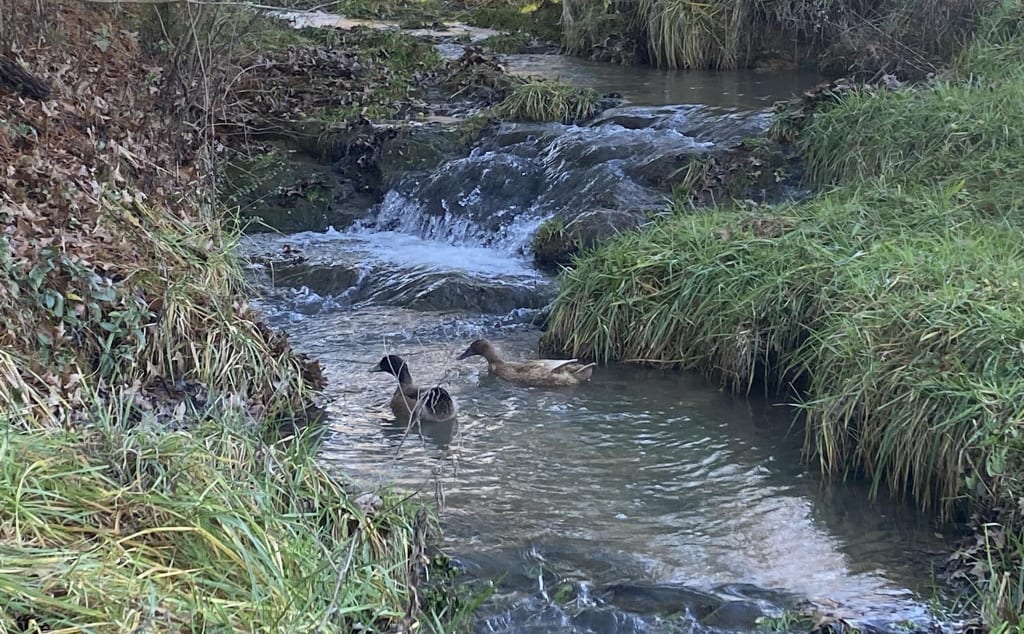
This is the seventh entry documenting our 14-month challenge to ourselves to prepare a Thanksgiving meal made entirely of food and ingredients grown, harvested, hunted and produced right here on Fain-XX Farm. Regardless of the outcome, subsequent entries, photos, recipes and social media posts will be arranged into a book format for publication.
* * *
Tuesday, February 14, 2023
Last week was bittersweet. We’ve added fruit and nut trees to the farm and we have our maple syrup kit to start the sugar season, but we lost a member of the farm family too.
Nelson, our drake, was the unfortunate victim of our playful and rambunctious 1-year-old boxer Olivier. We have five dogs now, only ever planned for three, but things happen. They have all integrated with the ducks very well, so much so that our malamute-hybrid, Freyja would frequently sit by the creek and watch them like it was her duty to protect them from predators. In fact, it was Freyja’s bark that alerted us that something was wrong on Saturday morning. When I went out to investigate, I was horrified to see a soaked Oli standing over what looked to be the lifeless body of Nelson. I scooped up the poor duck and saw that he was barely clinging to life, so we spent the rest of that day trying to nurse him back. He appeared to be in shock early on, so we covered him in a dry towel and set him in front of a space heater to warm him. After a while, Nelson grew more alert and started moving around on his own, though he had a concerning cough and he remained very weak.
We checked on Nelson frequently and we thought he would pull through, but I looked in on him only moments after Jessica last saw him alive and he had given up the ghost. Water came out of his beak when I picked him up leading us to believe he likely succumbed to water in his lungs. We believe Oli was simply trying to play, but unfortunately drowned the young drake. Salle is alone for now, Liza disappeared before Christmas, but on the coming weekend, we are getting a 9-month-old drake in need of a home, and we built an incubator in the hope that Salle’s eggs are still fertile. She has the tell-tale signs that she and Nelson mated recently, and she should be laying fertile eggs for 7–10 days after. Once we have six in the cube, we’ll start collecting for the fridge again. If out of the six eggs, we can get at least two more duck hens, we’ll be happy.
Soaring Food Costs Changes Priorities
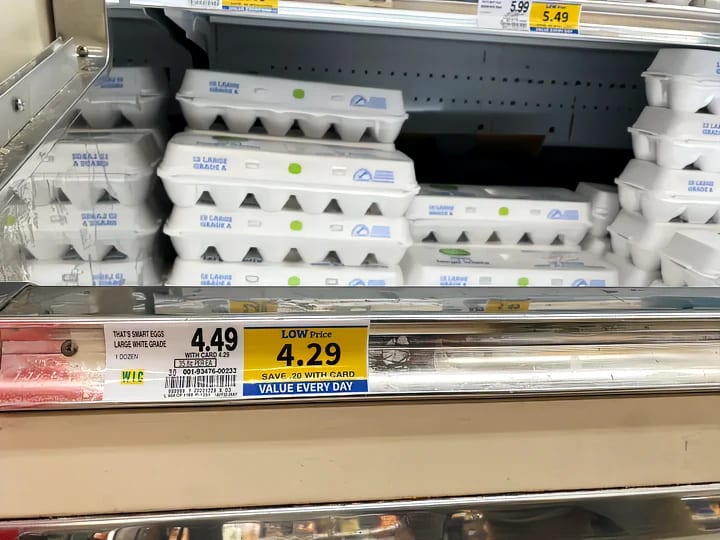
The price of all groceries, not just things we are planning for Thanksgiving, has us reevaluating our purchases. Fortunately, Salle and the chickens are giving us a dozen eggs every three days now, and that is huge considering a dozen of the cheap eggs are almost $5 around here now. It is the burgeoning price of fruit that finally convinced me to shift some of our modest budget to more fruit trees. I had a craving for pears last week and while at the grocery store, decided to pick up a few. Once I saw the price, I almost walked away, but decided on an experiment. I picked up one pear and put it on the scale; it was half a pound. So, at $3 per pound, that meant that one pear would cost me a buck-fifty. I walked away without my pears.
I remembered the nearby Tractor Supply had fruit trees on sale, specifically Bartlett pears and honeycrisp apples, among others and pecan trees as well. The pears and apples were older trees and from the looks of them, I would guess there is a good chance they might actually produce a handful of fruit this year. Not going to satisfy my craving for pears anytime soon, but I decided it would be worth the wait to not worry about what the grocery stores are charging for fruit anymore.
My suspicion was that both the apples and pears needed another tree to be fruitful, so I planned to buy two. I knew Tractor Supply had several honeycrisp apples and at least two Bartlett pears so I hurried to the store to get the two of each I wanted. Unfortunately, someone without the knowledge that it takes two trees, or someone wanting to replace another tree, beat me to the store and took one of the last two Bartletts. I bought their last pear regardless, counting on yet another suspicion that I had, namely that the burgeoning spread of invasive, ornamental Callery pear, aka Bradford pear, would serve as a pollinator for my sole Bartlett. I know crab apples pollinate other apple trees, and the Bradford pear is really just the crabapple of pears, so it seemed plausible to me. Upon further investigation I discovered I was right. The Callery pear, of which there are many on the farm, will in fact pollinate a Bartlett, so even if I can’t manage to acquire another tree before spring, we should be fine. I further learned that both the honeycrisp apple and the Bartlett pear are self-pollinating but do much better when there is another pollinator nearby.
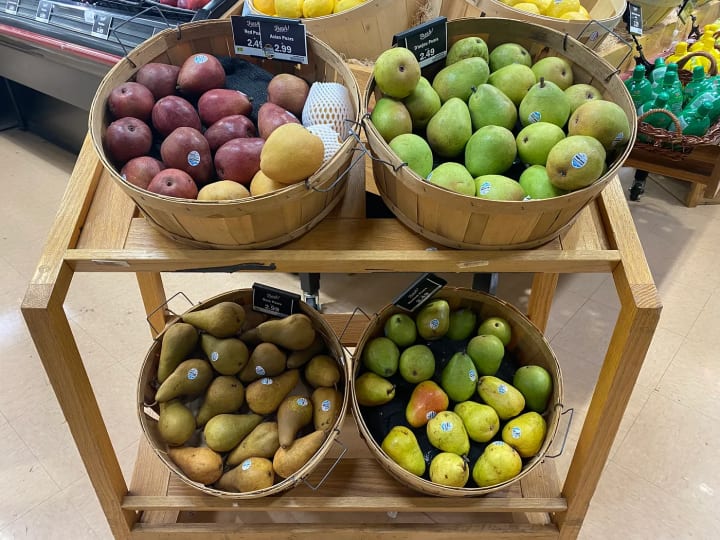
Though we have planned for apples and pears, neither were a priority this year until my trip to the grocery store. While I was at it, I picked up a few pecan trees too, without knowing the particulars about pecan pollination. I took home two Kanza trees and one Choctaw. I knew we needed at least two trees, but I didn’t know we needed cross pollination. Kanza is a type II and needs a type I to pollinate and produce seed. The Choctaw is technically self-pollinating, but it too is a type II and does nothing for the Kanza. I needed a type I, preferably an Oconee or a Pawnee, and I had to go to Kingsport to find the last Oconee at another Tractor Supply. I want another Oconee or perhaps a Pawnee, but it might be next year before I can complete the set. Of course, it will be years before the pecan trees are supplying our pecan pie, but eventually we can stop substituting hickory nuts. Sad for the hickory trees, but I’m sure the wildlife will be pleased there is more to forage.
The downside of getting trees now before they are gone, is the ground has been too wet to plant in most of the lowest spots. I’ve never been one to complain about rain, but what has me most worried is that all the rain we are having now means a dry summer. A dry summer will be an unfortunate circumstance for sure; however, the area I’m focusing much of my planting in has an almost annoyingly high water-table that I am hoping will be our saving grace provided I can get it to drain properly when too high like it is right now.
A Good Steward
I am delving heavily into the science of agriculture and not just dropping seeds in the ground. I’m taking the time to learn more about soil acidity, drainage, chill hours, bloom times, days to maturity and more. I’m even considering our own weather station. There isn’t anything I can do about the weather, but even being able to accurately record chill hours (hours spent between 32 degrees and 45 degrees) well help me to know what to expect and when to expect it.
Science is a double-edged sword, however. Big agriculture has unfortunately abandoned the old ways of harmonizing with the land. Greed and an increasingly needy population that has forgotten their roots, has turned modern farms into world-class competitive athletes hopped-up on steroids and antibiotics in the form of chemical fertilizers and dangerous pesticides and herbicides (not to mention hormones and antibiotics used on livestock). Just like competitive athletes, there will come a time of diminishing returns and eventually burn-out. The rising cost of fruits, vegetables and meat is only going to get worse. The hobby farmer and smaller communities that pool their talents and resources may be our saving grace, but now is the time to relearn what we have forgotten.
Pollinators
Whether the budding flowers of new fruit trees, or the burgeoning blossoms of amaranth, pollinators are an essential need. In the past, my gardens have always been pollinated by whatever is organic to the area. While I’m still confident in Nature’s engine, I feel that I am leaving a critical component of the engine to chance if I do not do what I can to maintain and even encourage that function. Some farmers will pair their fruit orchards with honeybees thereby guaranteeing the proximity of pollinators while taking advantage of the honey too. I don’t think we are ready to raise honeybees just yet, nor do I think we ever will be, but last spring I stumbled upon a discovery that proved we do not have to be beekeepers to promote a prolific, and organic pollinator in our gardens.
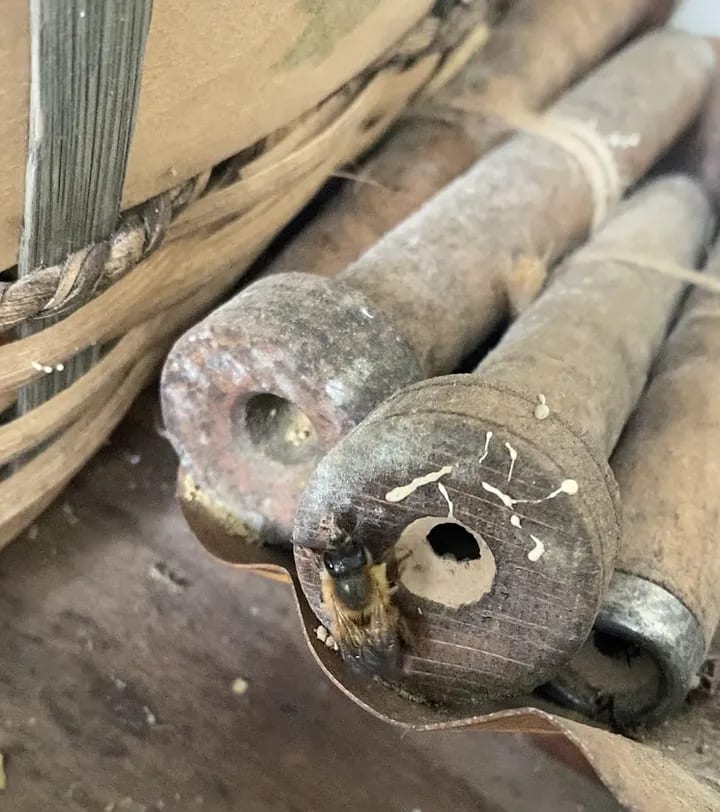
Jessica’s grandmother, in her younger days, was an experienced beekeeper and even served as a hive inspector for the Commonwealth of Virginia. With that kind of knowledge-treasure in the family, and our innate desire to be self-reliant, having a few hives seemed the natural progression for us even before acquiring Fain-XX Farm. About three years ago, in my quest to learn more about honeybees, I read an excellent book called The Beekeepers Lament, by American journalist Hannah Nordhaus. It is a shocking account of the trials and tribulations of American beekeepers and a burgeoning California Almond industry — not the best gig for honeybees. From Nordhaus I learned about varroa mites, hive beetles, Colony Collapse Disorder — and the list goes on. Suddenly, beekeeping didn’t seem so glamourous or easily attainable anymore. Furthermore, considering America’s love for honey and our agricultural dependence on honeybee pollination, it came as a shock to me to learn from this book that the honeybee isn’t native to the America’s. Early Europeans first brought the honeybee to the North American Continent in the 17th century. So, what was the principal pollinator before then?
About mid-March of last year, I was sweeping the back porch when I noticed a flurry of activity coming and going and buzzing by my head. They looked like honeybees, and my immediate concern was that a wild hive had taken up residence in our walls somewhere. I stopped what I was doing and waited for another flyby hoping to trace their origin or their destination as it was. As a couple bees flew past my face again, I followed them each to their own antique thread spool stacked in a box on a table that we usually decorate with seasonal whatnots. As I watched these two bees entering the small holes of their spools and mudding up the entrances, more bees came and performed the same strange task in their own spools, more as individuals rather than as a hive. I’m very familiar with the mud dauber wasp and their mud huts they leave all over creation, but I had never seen a honeybee do anything like this. I pulled out my phone and started looking for answers — mason bees!
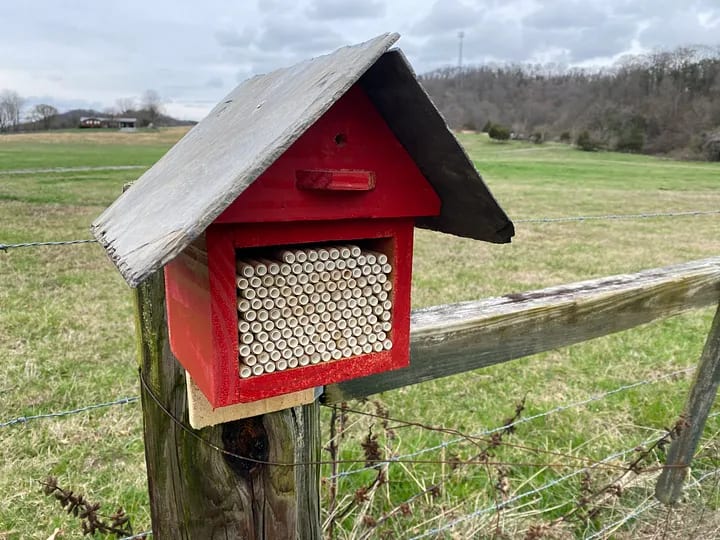
The mason bee is a solitary creature like the much larger carpenter bee, but unlike the destructive carpenter bee that can render a wooden bench to sawdust in a few years, the mason bee seeks out suitable existing holes to deposit its eggs and food stores. It then collects mud to seal up the entrance until the young adult mason bee emerges from the hole in late spring of the following year. Like the honeybee, the mason bee collects pollen to feed its young, but unlike the honeybee, the mason bee is a native pollinator to North America. They are more docile than honeybees and rarely ever sting; in fact, the male mason bee doesn’t even have a stinger.
On the Fourth of July, our closest neighbors, Gary and Marianne New, retired transplants from Indiana, came for a visit with their adult son, his wife and children. From the hill behind our house, we have a great view of the town’s fireworks. As they came into the house, I showed Gary the spools now serving as bee houses and commented that I needed to figure out how to get them out to the field where I would be planting fruit trees and other fruit and vegetables. Gary has his own woodcraft shop in his garage and loves building birdhouses for the neighborhood. A couple weeks after the Fourth, Gary came to the house to present to us his latest creation, a mason bee house. I didn’t know it was even a thing, but here was my neighbor with one he built. It looked like a birdhouse, but the front panel of the house where a hole would have been, was completely missing. Stacked in the small open box under an arched roof, was about 50 paper and cardboard tubes actually manufactured to attract mason bees. In the fall, I asked Gary to make us a few more of the houses and last week he delivered five new mason bee condos just in time for the season.
It is likely another two or three weeks before the young mason bees emerge from their cylindrical cribs, but a warm February threatens to cause trouble for some earlier bloomers like our peaches. The warmer nights may also put a stop to our maple sugar season even before it begins, but I would double the odds that we will have another hard freeze or two in March and April. Regardless, spring is around the corner and things are going to start happening fast. I still have pawpaws to transplant, lots of clearing to do, sassafras root to harvest, fields to till, trees to tap and so much more. Winter has made us slow to our challenge but we will soon need to turn up the dial.
Baby Lewey
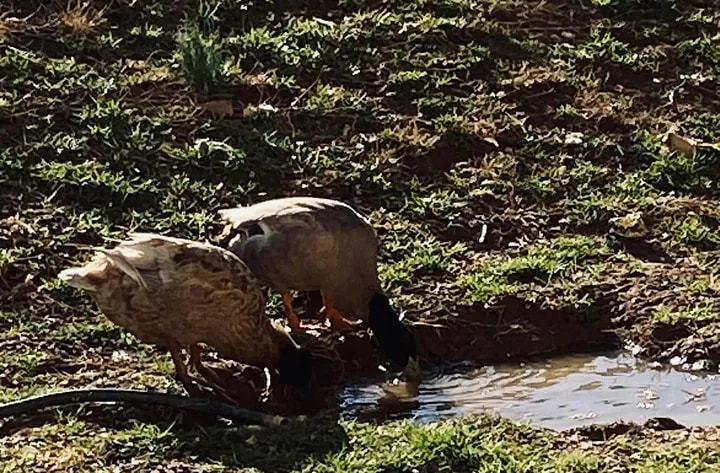
Since I started this episode, we have acquired another Bartlett pear an Arkansas black apple and we brought home Baby Lewey, a large Khaki Campbell drake who has made himself at home. He took to Salle immediately as did she to him. Lewey is more cautious than Nelson was, which will be beneficial to Salle. Together with Nelson and Liza, Salle would trek downstream much farther from the house, which is what resulted in Lena’s death a year ago, and Liza’s disappearance a few months ago. There is plenty of creek near the house; Lewey is content to remain close to home and Salle is following his lead. Unfortunately, it doesn’t look as if Salle’s eggs immediately following Nelson’s demise were fertile. We will acquire a couple new ducklings in the coming weeks though, add a new pond sometime this spring and a new evening enclosure closer to the water thereby completing our duck family for now.
About the Creator
The Bantering Welshman
M.S. Humphreys is The Bantering Welshman, an East Tennessee native, author, journalist, storyteller, marketing specialist, husband and step father. https://www.instagram.com/thebanteringwelshman/ and http://www.banteringwelshman.com


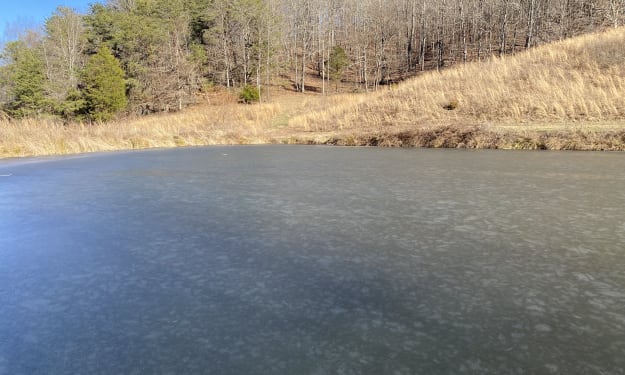
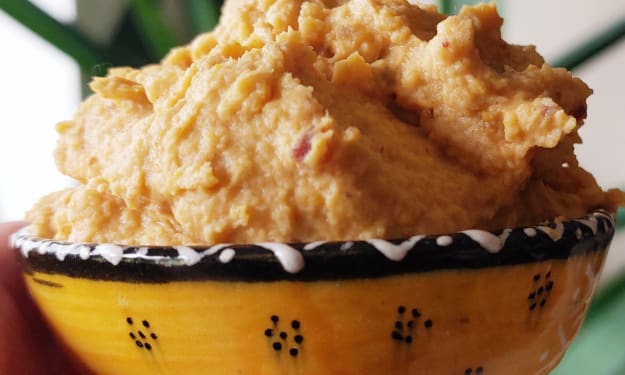
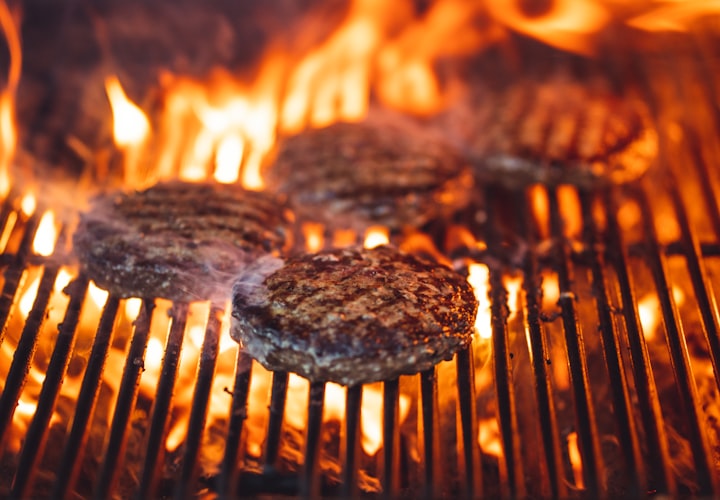

Comments
There are no comments for this story
Be the first to respond and start the conversation.